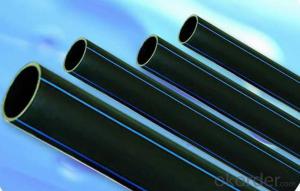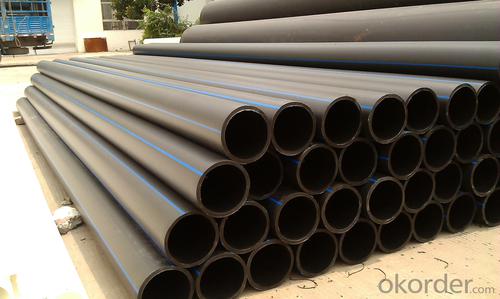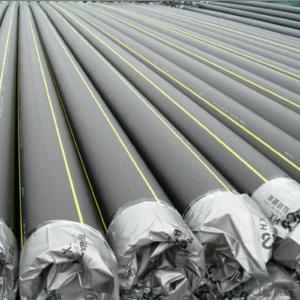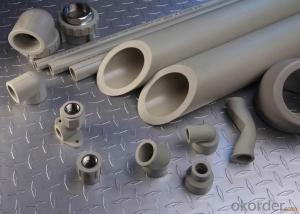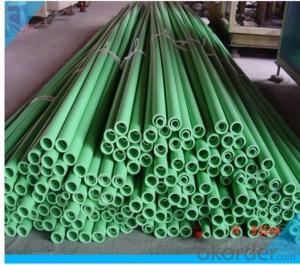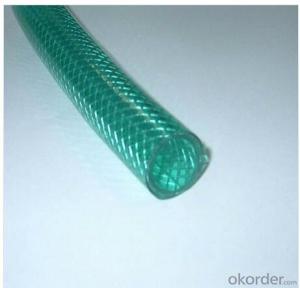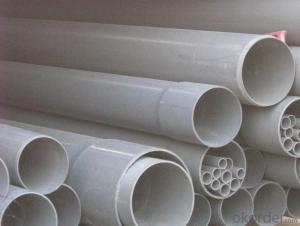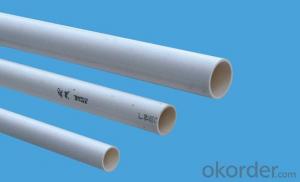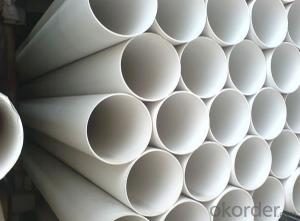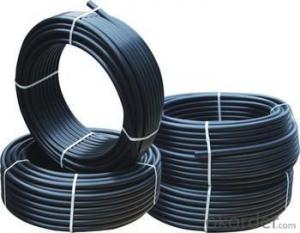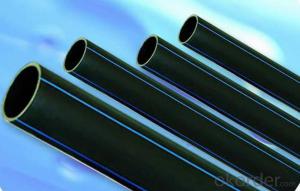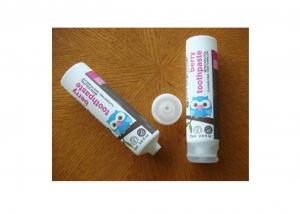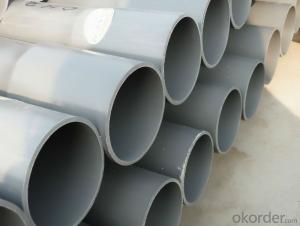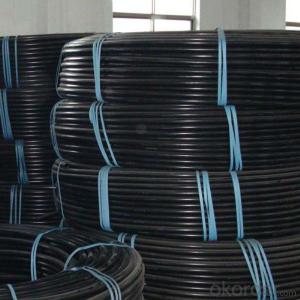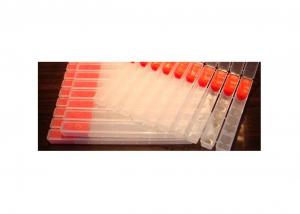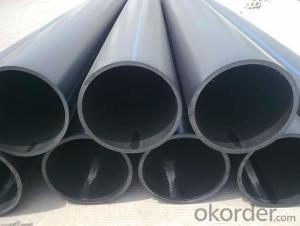Plastic Tubes HDPE Pipe 4427-1996
- Loading Port:
- China Main Port
- Payment Terms:
- TT OR LC
- Min Order Qty:
- -
- Supply Capability:
- -
OKorder Service Pledge
OKorder Financial Service
You Might Also Like
Physical properties[edit]
Polyethylene is a thermoplasticpolymer consisting of long hydrocarbon chains. Depending on the crystallinity and molecular weight, a melting point and glass transition may or may not be observable. The temperature at which these occur varies strongly with the type of polyethylene. For common commercial grades of medium- and high-density polyethylene the melting point is typically in the range 120 to 180 °C (248 to 356 °F). The melting point for average, commercial, low-density polyethylene is typically 105 to 115 °C (221 to 239 °F).it is transprant.
Chemical properties[edit]
Most LDPE, MDPE and HDPE grades have excellent chemical resistance, meaning that it is not attacked by strong acids or strong bases. It is also resistant to gentle oxidants and reducing agents. Polyethylene burns slowly with a blue flame having a yellow tip and gives off an odour of paraffin. The material continues burning on removal of the flame source and produces a drip.[3] Crystalline samples do not dissolve at room temperature. Polyethylene (other than cross-linked polyethylene) usually can be dissolved at elevated temperatures in aromatic hydrocarbons such as toluene or xylene, or in chlorinated solvents such as trichloroethane or trichlorobenzene.[4]
GB/T13663-2000:
| PE63管材规格 | |||||
| 公称 外径dn,mm | SDR33 | SDR26 | SDR17.6 | SDR13.6 | SDR11 |
| 公称压力 PN,Mpa | |||||
| 0.32 | 0.4 | 0.6 | 0.8 | 1.0 | |
| 公称 壁厚 | 公称 壁厚 | 公称 壁厚 | 公称 壁厚 | 公称 壁厚 | |
| 16 | 2.3 | ||||
| 20 | 2.3 | 2.3 | |||
| 25 | 2.3 | 2.3 | 2.3 | ||
| 32 | 2.3 | 2.4 | 2.9 | ||
| 40 | 2.3 | 2.3 | 3.0 | 3.7 | |
| 50 | 2.3 | 2.9 | 3.7 | 4.6 | |
| 63 | 2.3 | 2.5 | 3.6 | 4.7 | 5.8 |
| 75 | 2.3 | 2.9 | 4.3 | 5.6 | 6.8 |
| 90 | 2.8 | 3.5 | 5.1 | 6.7 | 8.2 |
| 110 | 3.4 | 4.2 | 6.3 | 8.1 | 10.0 |
| 125 | 3.9 | 4.8 | 7.1 | 9.2 | 11.4 |
| 140 | 4.3 | 5.4 | 8.0 | 10.3 | 12.7 |
| 160 | 4.9 | 6.2 | 9.1 | 11.8 | 14.6 |
| 180 | 5.5 | 6.9 | 10.2 | 13.3 | 16.4 |
| 200 | 6.2 | 7.7 | 11.4 | 14.7 | 18.2 |
| 225 | 6.9 | 8.6 | 12.8 | 16.6 | 20.5 |
| 250 | 7.7 | 9.6 | 14.2 | 18.4 | 22.7 |
| 280 | 8.6 | 10.7 | 15.9 | 20.6 | 25.4 |
| 315 | 9.7 | 12.1 | 17.9 | 23.2 | 28.6 |
| 355 | 10.9 | 13.6 | 20.1 | 26.1 | 32.2 |
| 400 | 12.3 | 15.3 | 22.7 | 29.4 | 36.3 |
| 450 | 13.8 | 17.2 | 25.5 | 33.1 | 40.9 |
| 500 | 15.3 | 19.1 | 28.3 | 36.8 | 45.4 |
| 560 | 17.2 | 21.4 | 31.7 | 41.2 | 50.8 |
| 630 | 19.3 | 24.1 | 35.7 | 46.3 | 57.2 |
- Q: Can plastic tubes be used for packaging liquids?
- Yes, plastic tubes can be used for packaging liquids. They are commonly used for products such as lotions, creams, gels, and other liquid-based substances. They provide a convenient and efficient way to dispense and store liquids while ensuring product integrity and ease of use.
- Q: Can plastic tubes be used for pneumatic systems?
- Yes, plastic tubes can be used for pneumatic systems. Plastic tubes, such as those made from polyurethane or nylon, are commonly used in pneumatic systems due to their lightweight nature, flexibility, and resistance to corrosion. They can effectively transport compressed air or gases, making them suitable for various pneumatic applications.
- Q: I'm trying to hang a picture.
- plastic tubes are called raw plugs.... they are for screws. you drill a hole in the wall, and usually the diameter of the hole is too big for the screw thread to bite properly, so hammer one of the plastic tubes into the hole, and then screw in a screw. hey presto it bites solidly and you can hang heavy stuff off it.
- Q: Do plastic tubes have any limitations in terms of shape or design?
- Yes, plastic tubes do have limitations in terms of shape and design. Due to the material properties, plastic tubes are typically limited to simple cylindrical or rectangular shapes. Complex or intricate designs may be challenging to achieve with plastic tubes. Additionally, the size of plastic tubes is often limited, and they may not be suitable for large-scale applications.
- Q: Can plastic tubes be used for greenhouse installations?
- Yes, plastic tubes can be used for greenhouse installations. They are commonly used as a cost-effective alternative to traditional glass or polycarbonate panels. Plastic tubes provide insulation, durability, and can withstand harsh weather conditions. They are suitable for constructing the framework of the greenhouse, supporting the covering material, and facilitating ventilation and irrigation systems.
- Q: there is a plastic tube that goes from the bathroom sink(strainer) into the wall. It seems to be clogged. How do I go about fixing this if it is leaking?
- You have the most puzzling question I've seen here yet! WHAT kind of a bathroom sink(strainer) assembly do you have? -- a plastic AIR tube from the strainer(?) into the wall?!?) If you think it is plugged, what is it supposed to do? What does it seem to be doing now to make you think that it is plugged? You're worried about its leaking. If it IS leaking now, would it be leaking air? Or are you worried that this strange tube might be by-passing the trap in your sink drain and connecting straight to the sewer drain piping in the wall -- thereby possibly allowing sewer gases to leak back into your bathroom. If that is the case, you should WANT that strange tube to be removed from the drain(strainer) and PLUGGED clear to the sewer piping -- if it does go there! Man! you got me bumfoozled!
- Q: What is the maximum temperature that plastic tubes can withstand?
- The maximum temperature that plastic tubes can withstand varies depending on the type of plastic used. However, most common plastics have a maximum temperature range of around 150 to 200 degrees Celsius (302 to 392 degrees Fahrenheit).
- Q: Can plastic tubes be bent without breaking?
- Yes, plastic tubes can be bent without breaking, depending on the type of plastic and its flexibility. Some types of plastic, such as polyvinyl chloride (PVC) or polyethylene, have a certain degree of flexibility that allows them to be bent without breaking. However, other types of plastic, like acrylic or polycarbonate, are more rigid and may be prone to breaking if bent forcefully.
- Q: Are plastic tubes resistant to pressure?
- Yes, plastic tubes can be resistant to pressure depending on the type of plastic used and the thickness of the tube walls. Some plastics, such as PVC or high-density polyethylene (HDPE), are known for their ability to withstand high-pressure applications. However, it is important to consider the specific characteristics of the plastic material and the intended pressure range before determining its suitability for a particular application.
- Q: Which drain is more effective, plastic pipe or concrete drain?
- Plastic plastic PE. Good! And is suitable for pipelines with pressure. The connection with hot melt welding, good water tightness
Send your message to us
Plastic Tubes HDPE Pipe 4427-1996
- Loading Port:
- China Main Port
- Payment Terms:
- TT OR LC
- Min Order Qty:
- -
- Supply Capability:
- -
OKorder Service Pledge
OKorder Financial Service
Similar products
Hot products
Hot Searches
Related keywords

